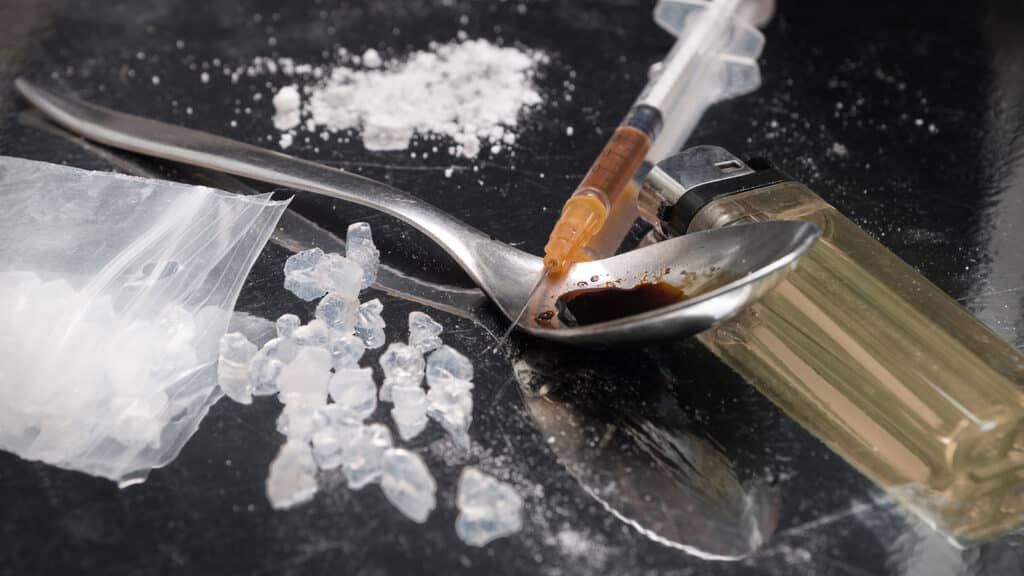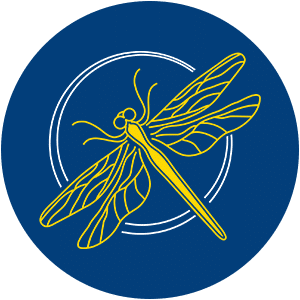If you or someone you know is struggling with meth addiction, you may have heard of the phenomenon known as “meth bugs.”
These are imaginary insects or parasites that meth users sometimes believe are crawling on or under their skin.
Meth bugs can be a terrifying and distressing experience, and they are a common symptom of methamphetamine abuse.
Table of Contents
Understanding Meth Bugs
Meth bugs, also known as meth mites, ice mites, or crank bugs, are a type of hallucination that heavy meth users experience often. It’s known as a tactile hallucination.
Understanding meth bugs is an important part of understanding the physical and psychological effects of methamphetamine addiction.

While these bugs aren’t real, the experience of feeling them can be very real and can lead to serious consequences.
While using meth does give an individual a boost of energy and euphoria, it’s not long before the users go through episodes of paranoia, restlessness, and agitation, which is known as “tweaking.”
This is when the person using meth starts fixating on their formication experience or their hallucinations and starts engaging in obsessive behaviors, such as picking the skin or scratching aggressively.
Physical Effects of Meth Use: More Than Hallucinations
Meth bugs are a common tactical hallucination that crystal meth users experience, but the sensation can feel very real.
People struggling with meth use may experience intense itching and start to aggressively scratch themselves, leading to open wounds and sores that may become infected.
Not only that, but if the wounds become infected with bacteria, it can lead to cellulitis, abscesses, or even sepsis.

Apart from the wounds and sores, meth use can cause debilitating skin diseases because it suppresses the immune system.
Meth abuse has also been tied to the destruction of tissues and blood vessels, inhibiting the body’s ability to repair itself. Users may begin experiencing acne, their sores may take longer to heal, and their skin might lose its luster and elasticity.
Not only that, but meth use also causes a reduction in blood flow, an elevation in heart rate, and an increase in body temperature.
These effects deprive the skin of blood flow, reducing elasticity and making it harder for the skin to heal from minor injuries.
Long-term meth abusers are also more likely to suffer from extreme tooth decay issues, which is commonly referred to as “meth mouth.”
This results from overall poor hygiene, especially oral, as well as poor nutrition. Add to that, meth users typically grind their teeth, reducing the amount of protective saliva around the teeth, thereby worsening decay.
Due to the poor nutrition and fixating on the dopamine fix above everything else, meth users also tend to eat less and suffer extreme weight loss.
How to Get Rid of Meth Sores?
Getting rid of meth sores requires a multifaceted approach to tackle two aspects: caring for the wounds and addressing the underlying causes.
Taking Care of Wounds
Meth bugs cause an itchy sensation, which urges the affected person to keep scratching at their skin. Eventually, this causes the growth of sores on the skin, and they need to be taken care of before they turn into something worse.

Here’s how to take care of meth sores:
- Cleanliness: Maintaining proper hygiene is essential to prevent and heal infections. Make sure to clean the affected areas with water and some mild soap.
- Don’t Pick: Picking and scratching the sores can delay healing and cause further damage to the skin. You can opt for covering the sores with sterile pieces of cloth or medical bandaids to prevent mindless picking.
- Using Topical Treatment: Some over-the-counter topical ointments and treatments can quicken the healing process and even prevent infection. However, you should take the opinion of a healthcare professional before applying any products to the open sores.
Professional Interference
Sometimes, it’s a good idea to get a medical professional’s help and guidance with the following:
- Managing Infections: It’s crucial to seek immediate professional help if the meth sores become infected. Otherwise, the infection can lead to grave complications and even require antibiotics.
- Assessing Wounds: A healthcare professional will let you know how to heal the wounds and recommend care methods to help with the sores after assessing how severe the sores are.
- Scar Prevention: A medical professional might recommend silicone-based gels or sheets, which help in preventing scars as well as aid in the healing of the sores.
Tackling the Use of Meth
After taking corrective measures to heal sores, prevent scarring, and stop any more sores from appearing, it’s crucial to tackle the main issue, which is the use of meth.
- Treating Addiction: The best way to address meth sores is to cut the issue at the roots—overcoming meth addiction. This will break the cycle of substance abuse and the harm that happens as a consequence, whether physical or psychological.
- Support: Support can be professional, from therapists, counselors, or a healthcare provider. It can also be through support groups.
- Rehab: If the meth use is severe and the damage it entails is becoming unmanageable, rehab could be a good idea. There are both inpatient and outpatient rehab programs, which can help individuals overcome their addiction in a methodological and structured way.
Psychological Effects of Meth Use: The Body and the Mind
Using meth can have severe psychological consequences. Meth use can cause a rush of dopamine in the brain, which can lead to intense feelings of pleasure and euphoria.
However, this rush can quickly lead to addiction, and changes in the brain begin accelerating, changing the brain chemistry for good.
One of the most severe psychological side effects of crystal meth use is psychosis. Meth-induced psychosis can be similar to paranoid schizophrenia. According to a study, up to 40% of people who use meth experience psychotic symptoms and syndromes.

These symptoms can include delusions, paranoia, and hallucinations. Meth users also experience mood disturbances, such as irritability, anxiety, and depression.
Another psychological consequence of meth use is the development of bugs or mites, which affects meth users both physically and psychologically.
Moreover, meth use has been tied with changes in behavior, such as violent tendencies, aggression, and criminal activity.
A person that uses meth may develop a tendency for risky and dangerous behaviors, elicited by the paranoia and delusions that result from meth use. They are a threat to their own safety and to those around them.
Other Factors Contributing to the Meth Bugs Sensation
In addition to the direct effects of meth on the brain, there are several other factors that can contribute to the development of meth bugs and increase the sensation. These include:
- Poor hygiene: Meth users often neglect basic hygiene practices, such as washing clothes and showering. This can lead to the accumulation of dirt, skin oils, and bacteria on the skin, leading to a sensation of bugs crawling on the skin.
- Sleep deprivation: Meth use can lead to insomnia and other sleep disturbances, which can exacerbate the sensation of bugs crawling on the skin.
- Nutritional deficiencies: People who use meth often neglect healthy dietary habits and suffer from malnutrition. This weakens the immune system, making it difficult for the body to fight off infections and other skin conditions that can contribute to the sensation of bugs crawling on the skin.
Treatment Options
If you or someone you know are struggling with meth mites or other hallucinations induced by the use of meth, it’s important that you start seeking the help of a professional.
Common treatment methods for meth addiction and the symptoms associated with it include medication, therapy, and support groups.

Medication
Antipsychotic medication can be an effective solution when it comes to reducing meth bug symptoms. Your doctor may prescribe medication to help control delusions and reduce the itching and scratching associated with meth bugs.
Therapy
Cognitive-behavioral therapy (CBT) can be helpful for individuals with meth addiction and delusional parasitosis. CBT can help you identify and change negative thought patterns and behaviors that contribute to your addiction and delusions.
Support Groups
Joining a support group, such as Narcotics Anonymous (NA), can provide you with a sense of community and support as you work to overcome your addiction and manage your symptoms.
It’s important to work with a healthcare professional to determine the best treatment options for your individual needs.
It’s possible to beat addiction and manage its symptoms with the right treatment and support, whether the struggle is physical, psychological, or both.
FAQs
Do all meth users experience meth bugs?
How Do I Tell If Someone Is Experiencing Meth Bugs?
Can Someone Experience Meth Bugs without Using Meth?
Final Thoughts
Most meth users end up struggling more on the psychological side than the physical side. This is manifested in severe addiction and reliance on the substance, a change in behaviors and mannerisms, and sometimes even psychosis.
It also affects a user somatically, as it affects the immune system, blood circulation, heart rate, and the elasticity of the skin.
It’s essential to seek professional help as soon as possible if you or someone you know is struggling with meth addiction.
Meth bugs are a sign that the addiction has become severe, and that’s when strict remedial actions should be taken with the individual struggling with meth addiction.



